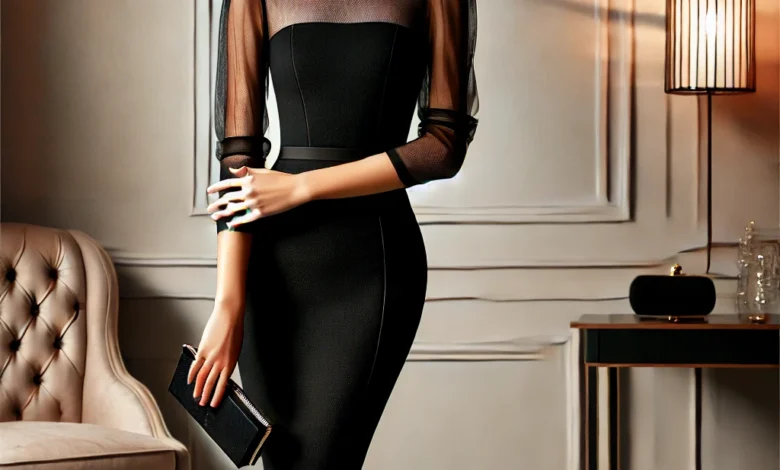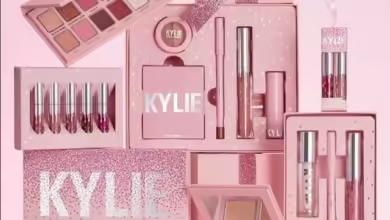The Elegance of the Cocktail Dress: A Timeless Fashion Staple

The cocktail dress, an iconic piece in women’s fashion, has epitomized elegance and sophistication for decades. Its versatile nature makes it a go-to choice for a wide array of occasions, from semi-formal gatherings to chic soirées. In this article, we delve into the origins, evolution, styles, and cultural significance of the cocktail dress, as well as tips for choosing the perfect one.
The Origins of the Cocktail Dress
The cocktail dress emerged in the 1920s, an era marked by social and cultural change. During this time, women began to embrace more liberated lifestyles, reflected in their clothing choices. Shorter hemlines, looser silhouettes, and the rejection of restrictive corsets were hallmarks of the flapper era, setting the stage for the cocktail dress.
The term “cocktail dress” itself gained prominence in the 1940s and 1950s, when cocktail parties became a fashionable way to socialize. These events called for attire that was less formal than evening gowns but still refined enough for an elegant gathering. Designers such as Christian Dior popularized the concept, crafting dresses that were both glamorous and practical.
Characteristics of a Cocktail Dress
Cocktail dresses are typically knee-length or slightly above, striking a balance between formal and casual. They are designed to be versatile, allowing the wearer to transition seamlessly from an afternoon event to an evening occasion. Key features often include:
Fitted Silhouettes: Accentuating the wearer’s figure with a tailored fit.
Elegant Fabrics: Materials such as silk, satin, chiffon, and velvet are commonly used to add a touch of luxury.
Simple Embellishments: Subtle details like lace, sequins, or beading enhance the dress without overpowering its simplicity.
Neckline Variations: From sweetheart and halter to boat neck and V-neck, the neckline often sets the tone of the dress.
Versatile Colors: While black is a perennial favorite, cocktail dresses come in a wide spectrum of hues to suit different preferences and seasons.
Evolution Through the Decades
1920s
The cocktail dress’s early iterations reflected the flapper aesthetic: loose-fitting with drop waists, fringe, and intricate beadwork. These dresses celebrated freedom of movement and expression, aligning with the spirit of the Jazz Age.
1940s and 1950s
Post-war glamour influenced the design of cocktail dresses during this era. Christian Dior’s “New Look” emphasized hourglass silhouettes, with cinched waists and full skirts. Tea-length dresses became popular, offering a demure yet chic option for women attending social gatherings.
1960s and 1970s
The cocktail dress underwent a modern transformation during these decades. Designers experimented with bold colors, geometric patterns, and shorter hemlines, reflecting the youthful energy of the era. Iconic figures like Audrey Hepburn in “Breakfast at Tiffany’s” popularized the little black dress (LBD), cementing its status as a wardrobe essential.
1980s and 1990s
The 1980s brought exaggerated features like padded shoulders, metallic fabrics, and ruffles to cocktail dress designs. In contrast, the 1990s embraced minimalism, with sleek, slip-style dresses gaining popularity for their understated elegance.
2000s to Present
Modern cocktail dresses celebrate diversity in design, catering to various body types, personal styles, and occasions. Designers often blend classic elements with contemporary trends, creating pieces that are both timeless and fashion-forward.
Types of Cocktail Dresses
The Little Black Dress (LBD) The quintessential cocktail dress, the LBD is celebrated for its simplicity and versatility. Introduced by Coco Chanel in the 1920s, it remains a staple in every woman’s wardrobe.
A-Line Dresses Characterized by a fitted bodice and a flared skirt, A-line dresses are flattering for most body shapes and offer a playful yet elegant look.
Sheath Dresses Sleek and body-hugging, sheath dresses are ideal for those seeking a sophisticated, streamlined silhouette.
Fit-and-Flare Dresses Combining a fitted top with a flared skirt, this style adds a touch of femininity and movement.
Off-the-Shoulder Dresses Perfect for showcasing the neckline and shoulders, this style exudes romance and charm.
Embellished Dresses Dresses adorned with sequins, beads, or embroidery add a touch of glamour, making them suitable for more festive occasions.
Choosing the Perfect Cocktail Dress
Selecting the right cocktail dress involves considering factors such as body shape, occasion, and personal style. Here are some tips to guide you:
Know Your Body Type
- Hourglass: Opt for fitted styles that accentuate the waist.
- Pear-Shaped: Choose A-line dresses that balance the proportions.
- Apple-Shaped: Empire waist dresses draw attention upward.
- Athletic: Ruffles or embellishments add curves and dimension.
Consider the Occasion
- For formal events, opt for classic designs in luxurious fabrics.
- For casual gatherings, experiment with playful patterns or bold colors.
Pay Attention to Fit A well-fitted dress is key to looking polished and confident. Tailoring, if needed, can make a significant difference.
Accessorize Thoughtfully
- Pair minimalist dresses with statement jewelry or bold shoes.
- For embellished dresses, keep accessories understated to avoid overwhelming the look.
Embrace Your Personal Style Whether you prefer vintage-inspired designs or modern minimalism, choose a dress that reflects your individuality.
Cultural Significance
The cocktail dress holds a unique place in fashion history, symbolizing both elegance and empowerment. It has evolved alongside societal changes, reflecting shifting norms and values. For many women, wearing a cocktail dress is a celebration of confidence, self-expression, and femininity.
Sustainability in Cocktail Dress Fashion
As the fashion industry embraces sustainability, eco-conscious cocktail dresses are gaining popularity. Designers are exploring:
- Sustainable Fabrics: Using organic cotton, recycled materials, or eco-friendly alternatives.
- Timeless Designs: Creating pieces that transcend trends, encouraging longevity in wardrobes.
- Ethical Practices: Supporting fair labor practices and reducing environmental impact.
By investing in sustainable cocktail dresses, consumers can enjoy stylish attire while contributing to a more responsible fashion industry.
Conclusion
The cocktail dress remains a cornerstone of women’s fashion, celebrated for its adaptability and enduring charm. From its origins in the 1920s to its modern interpretations, this iconic garment continues to evolve, capturing the essence of sophistication and style. Whether you’re attending a glamorous party or a casual evening gathering, the cocktail dress offers the perfect blend of elegance and practicality. As fashion trends come and go, the timeless appeal of the cocktail dress ensures its place in wardrobes for generations to come.





